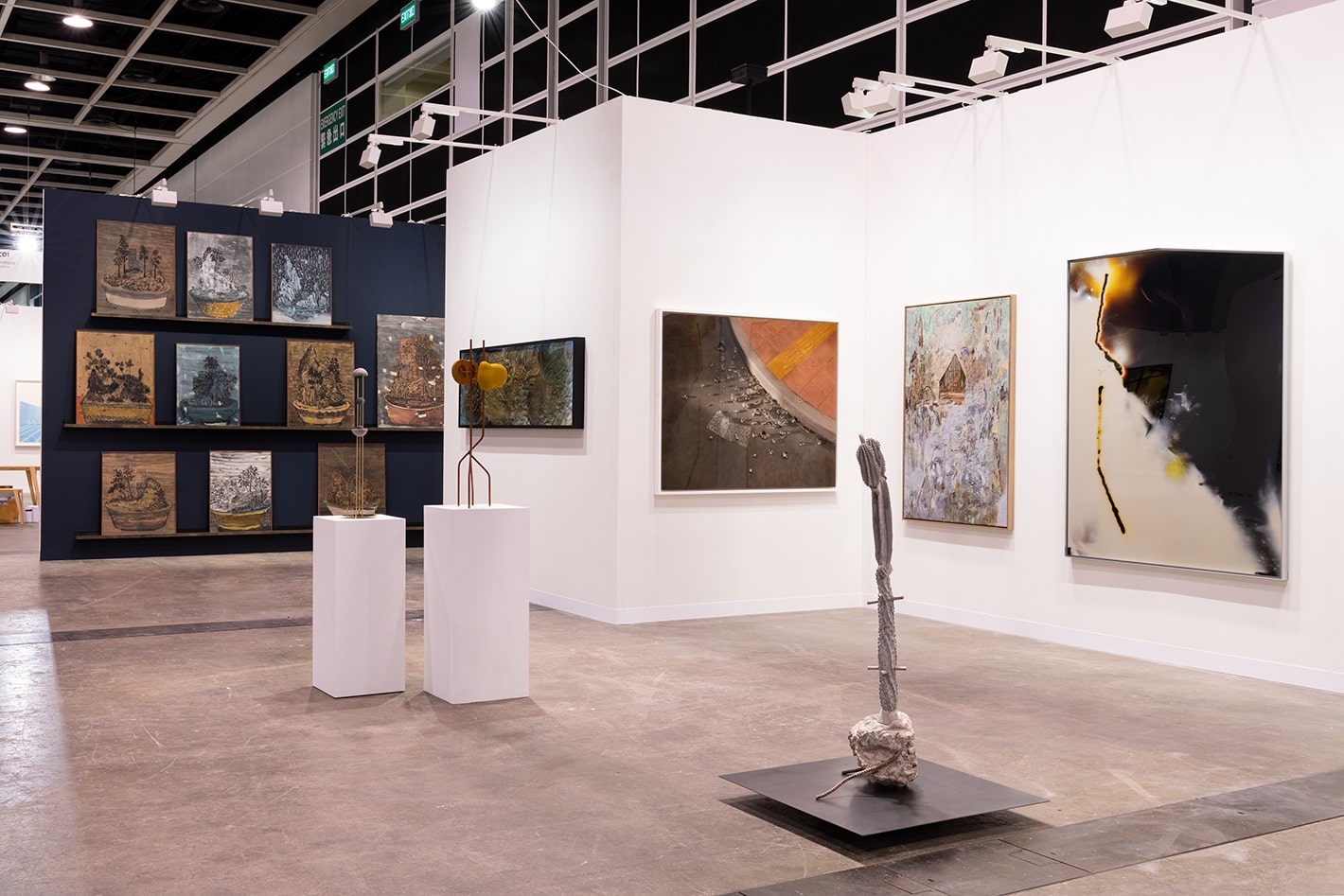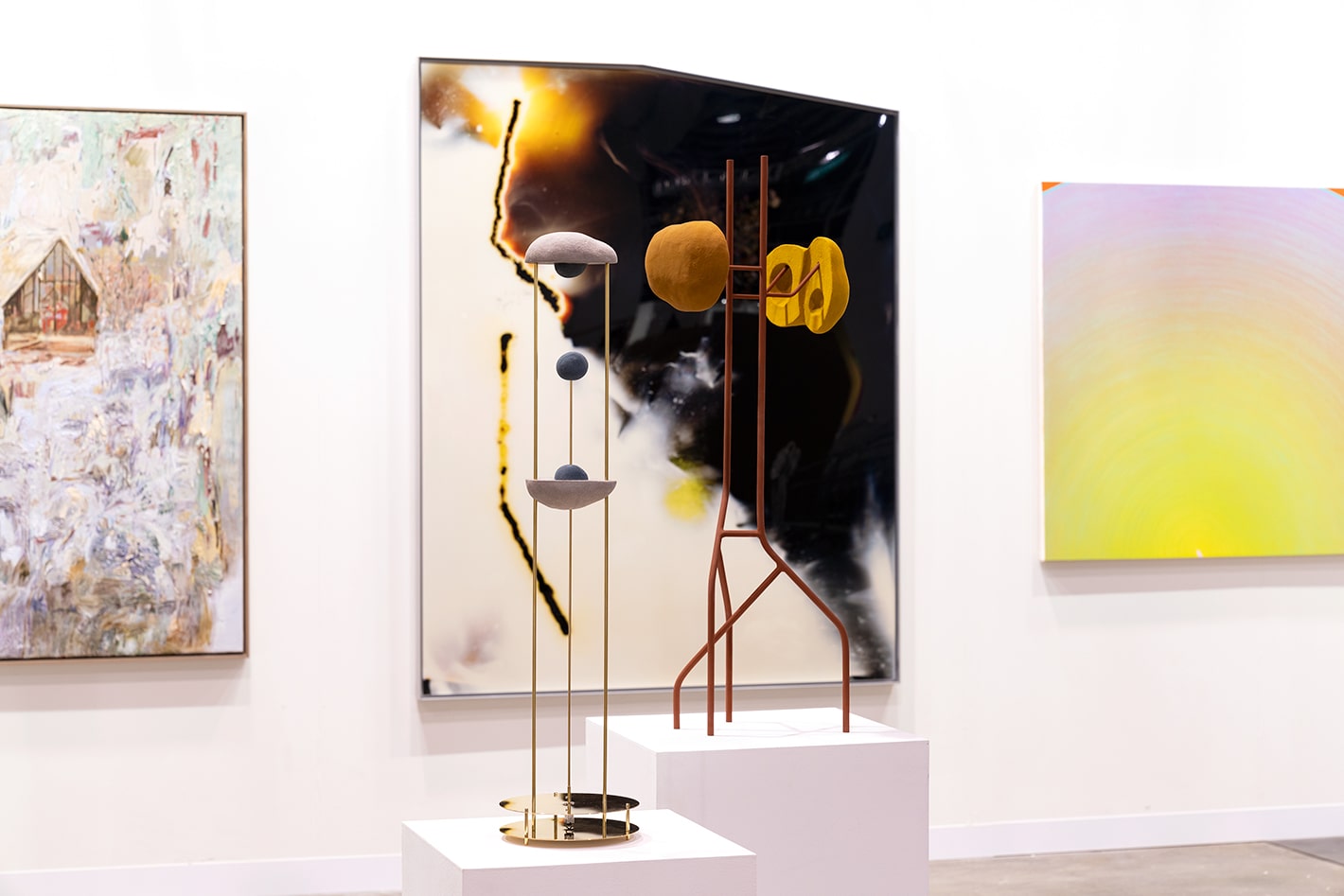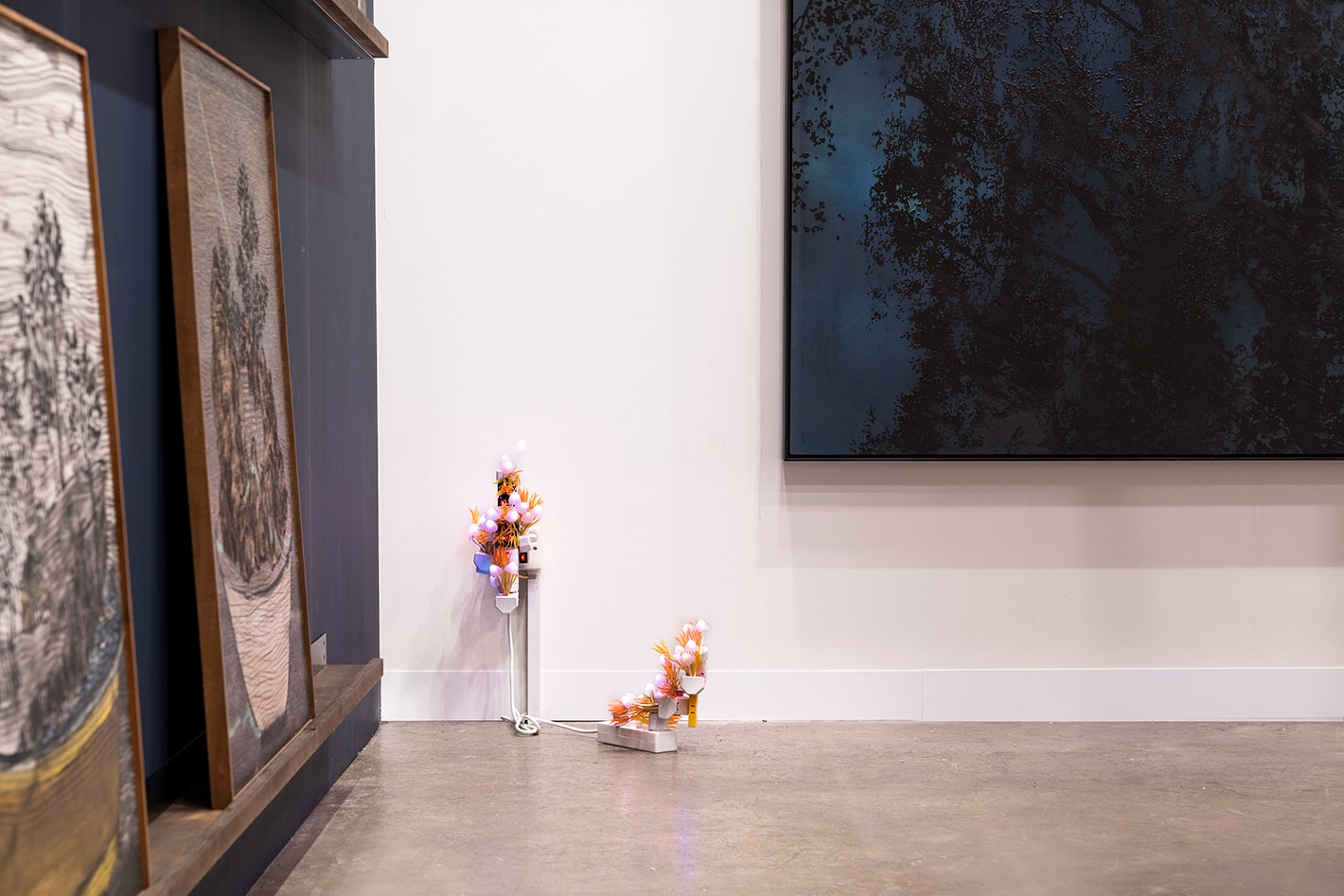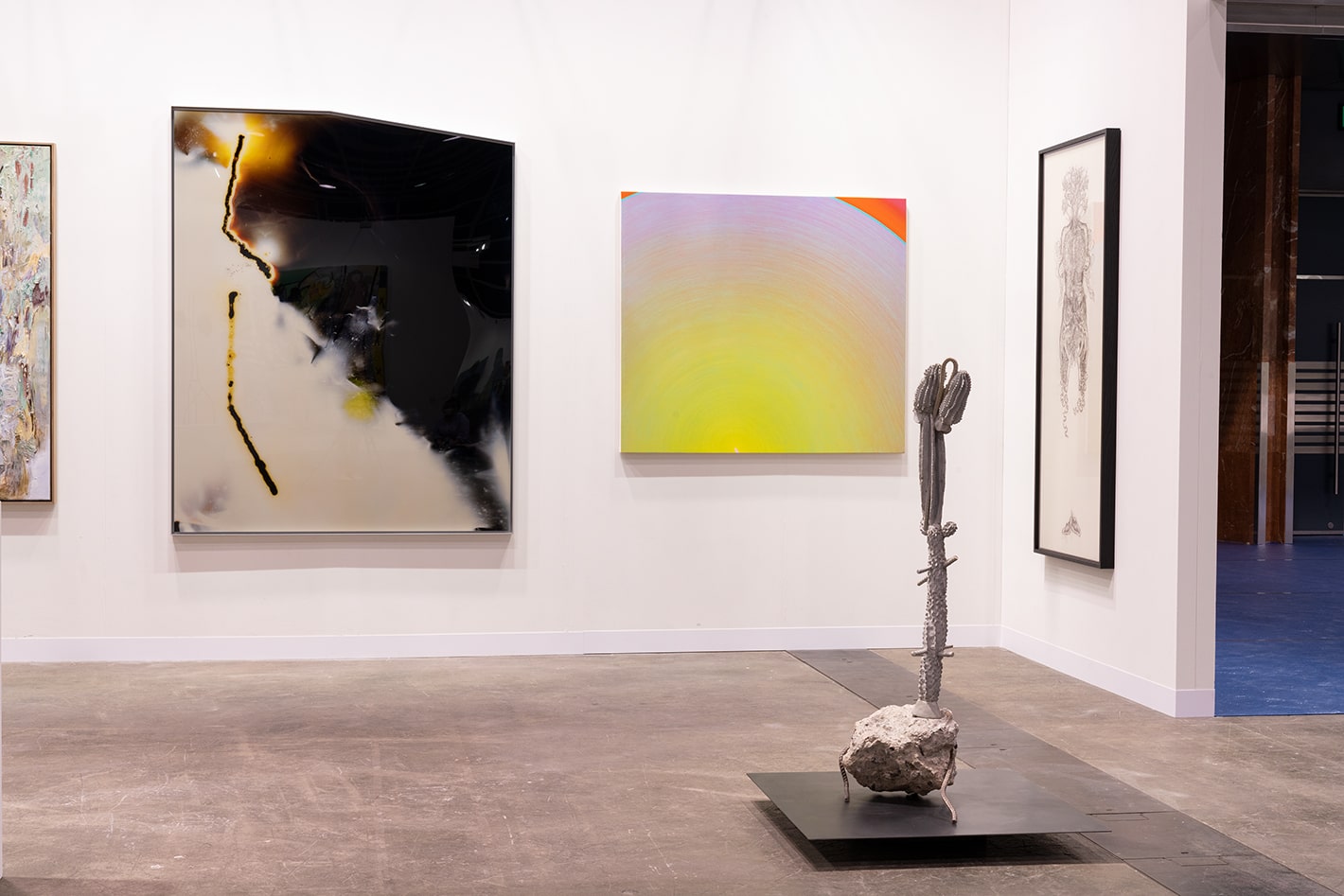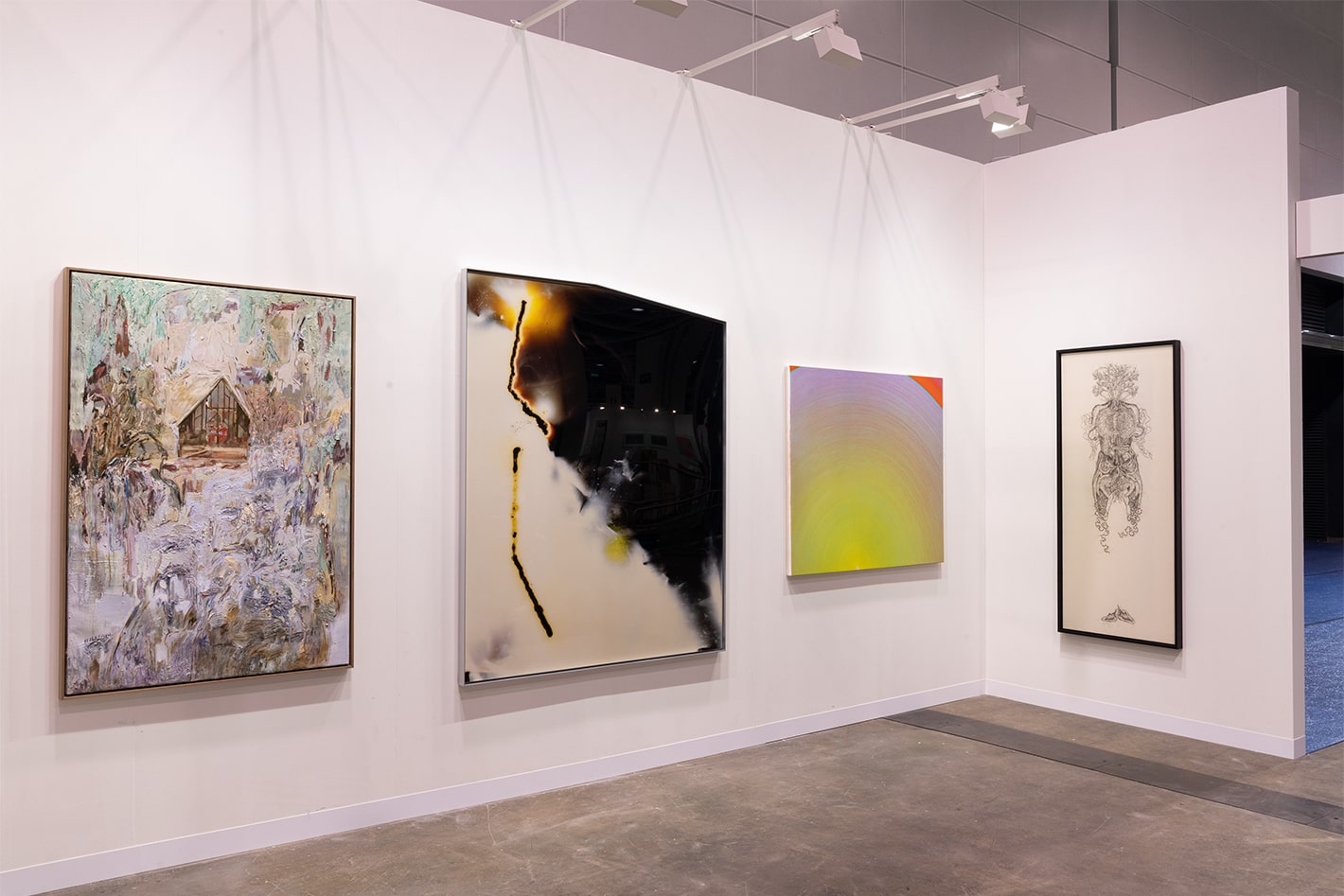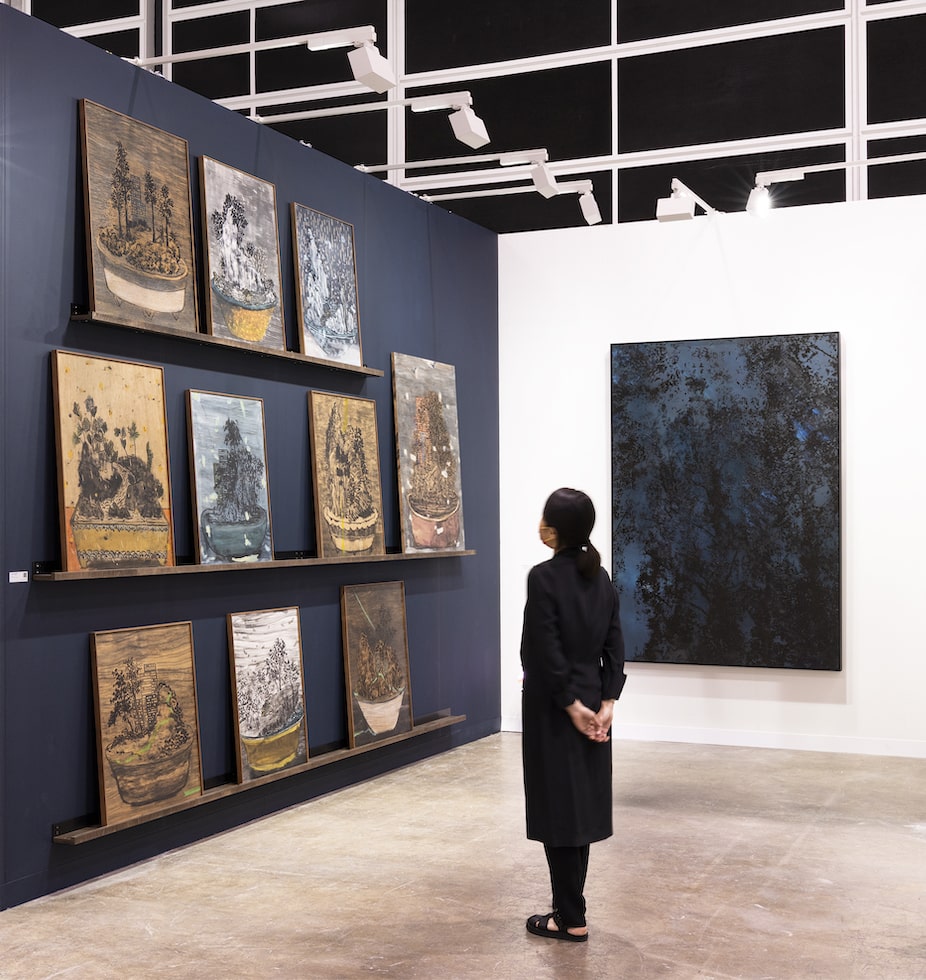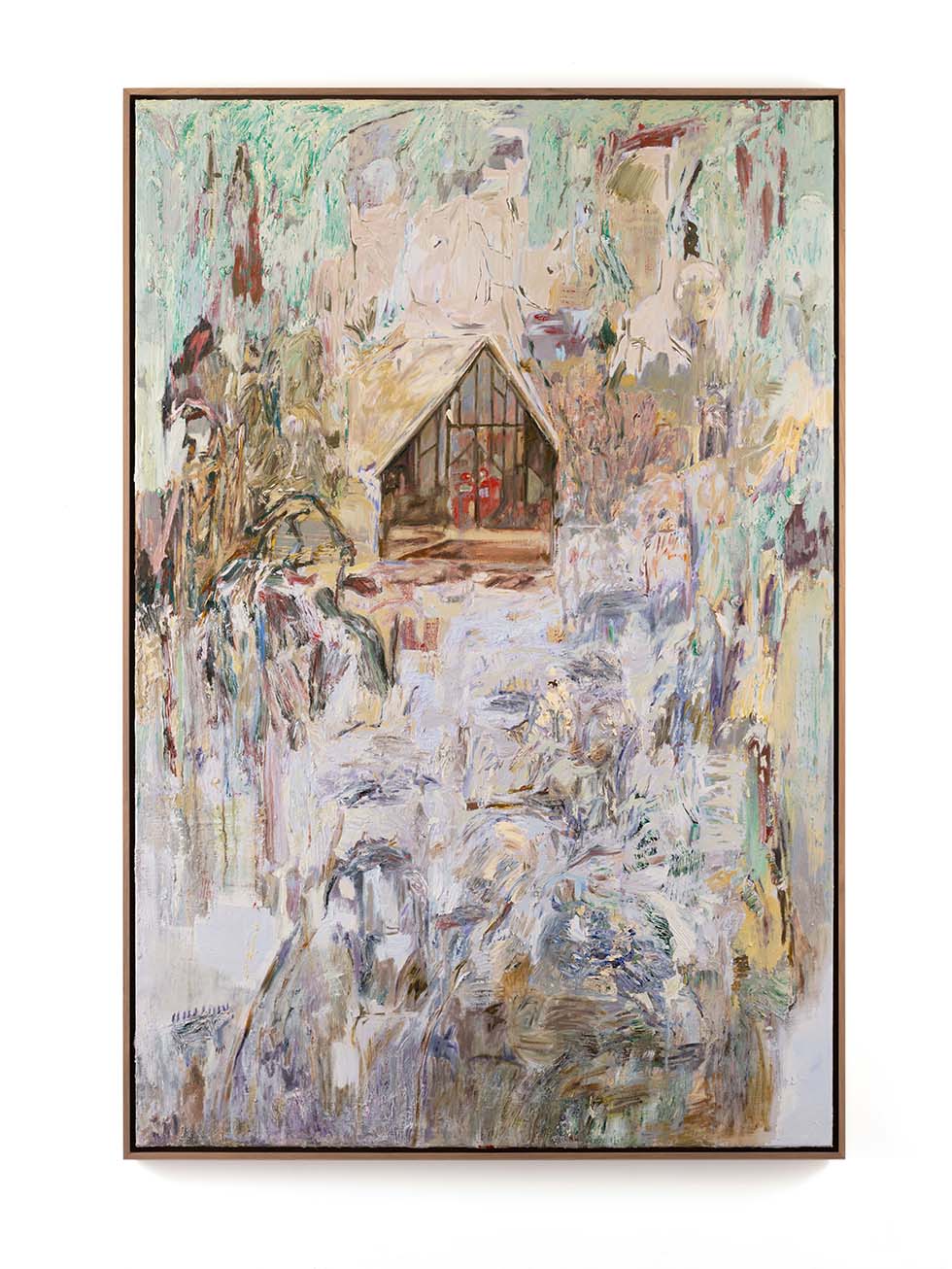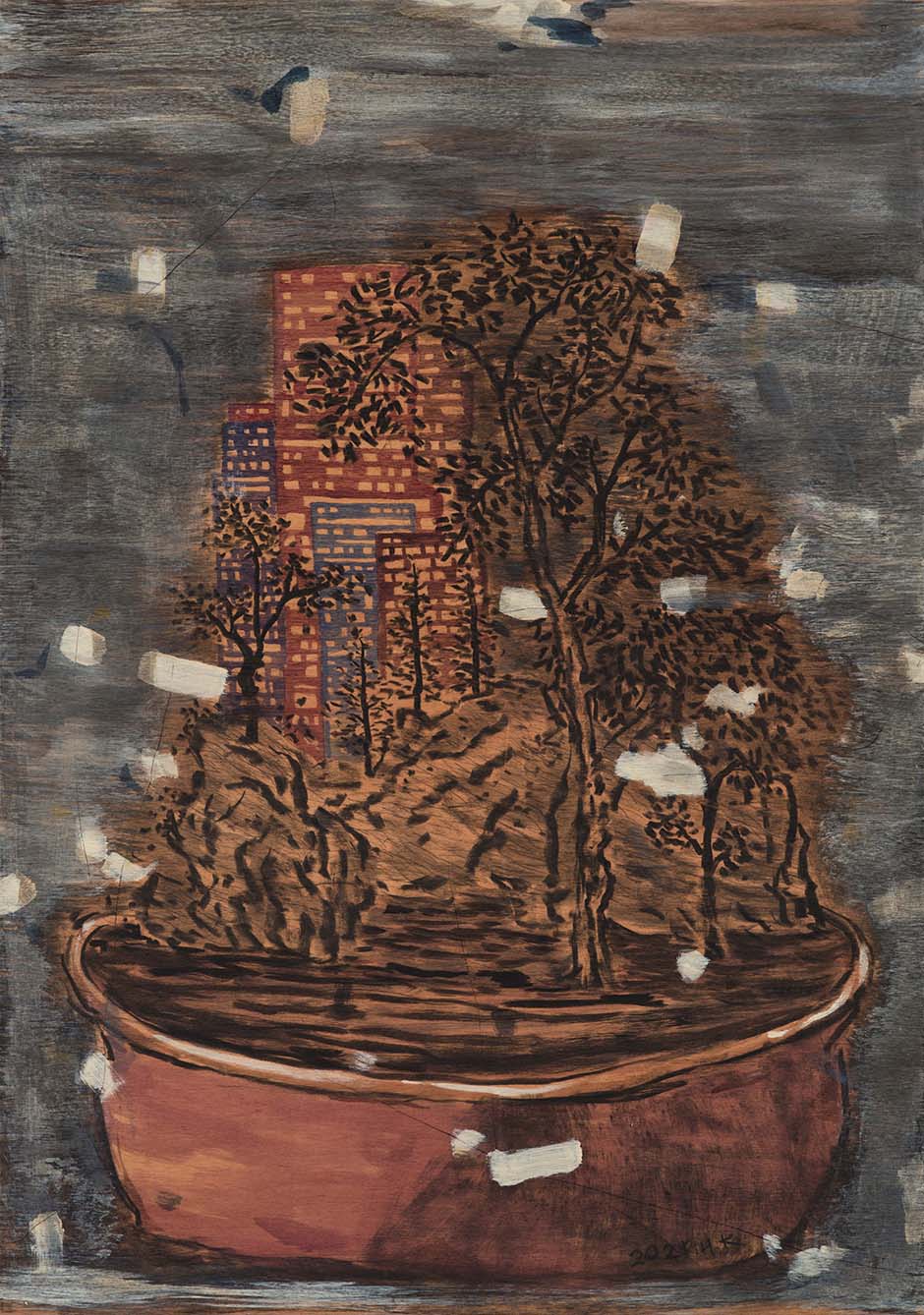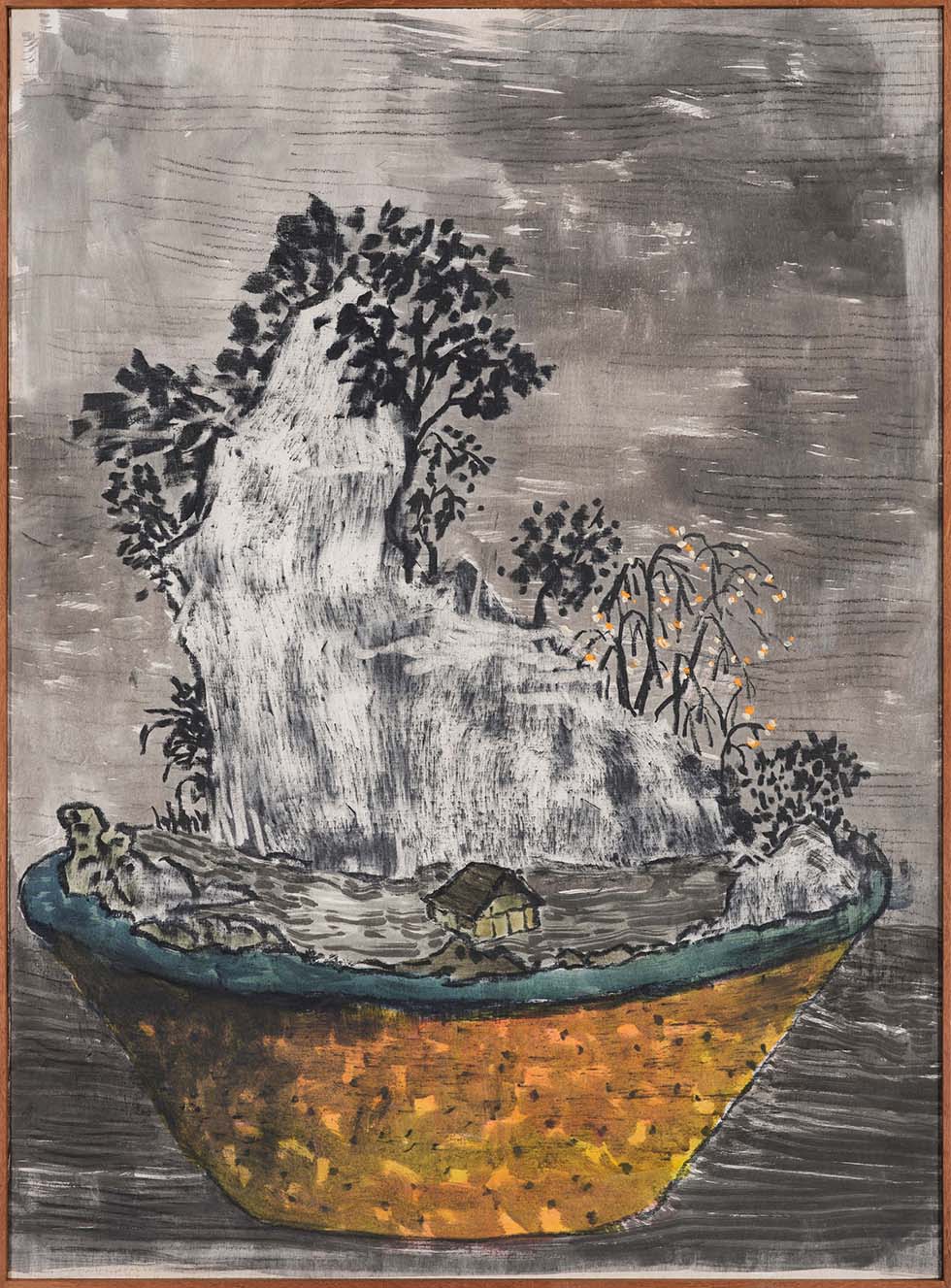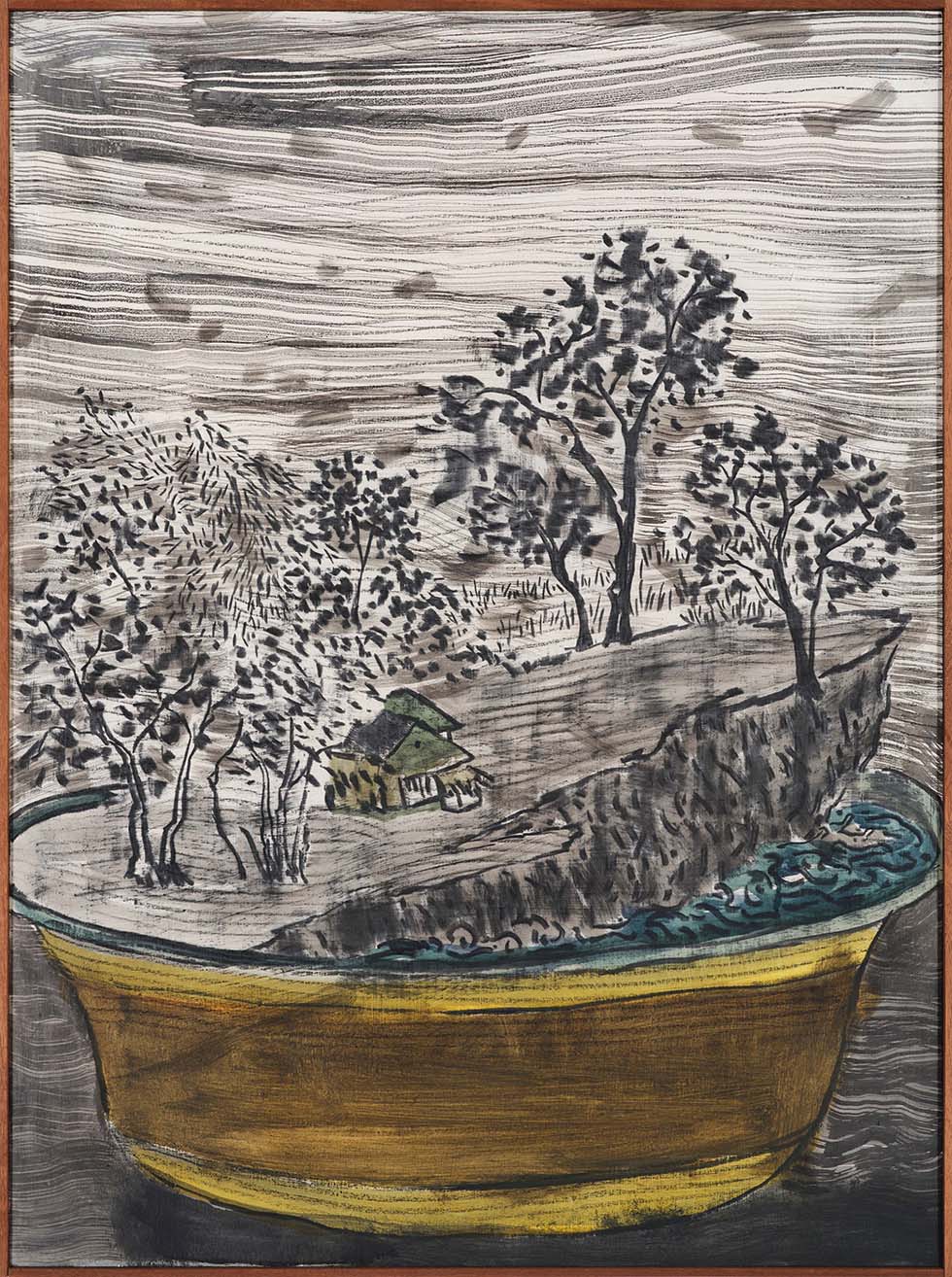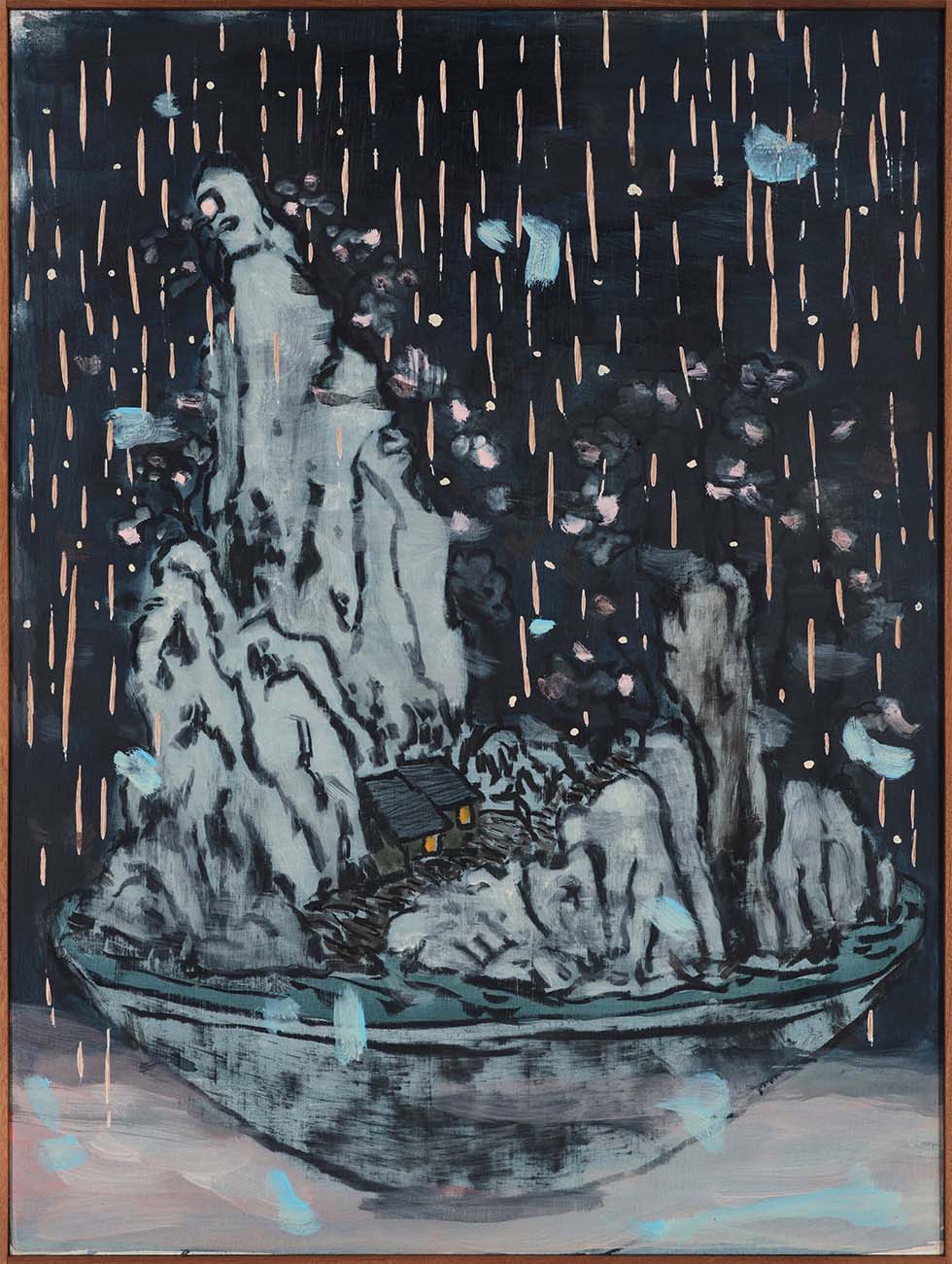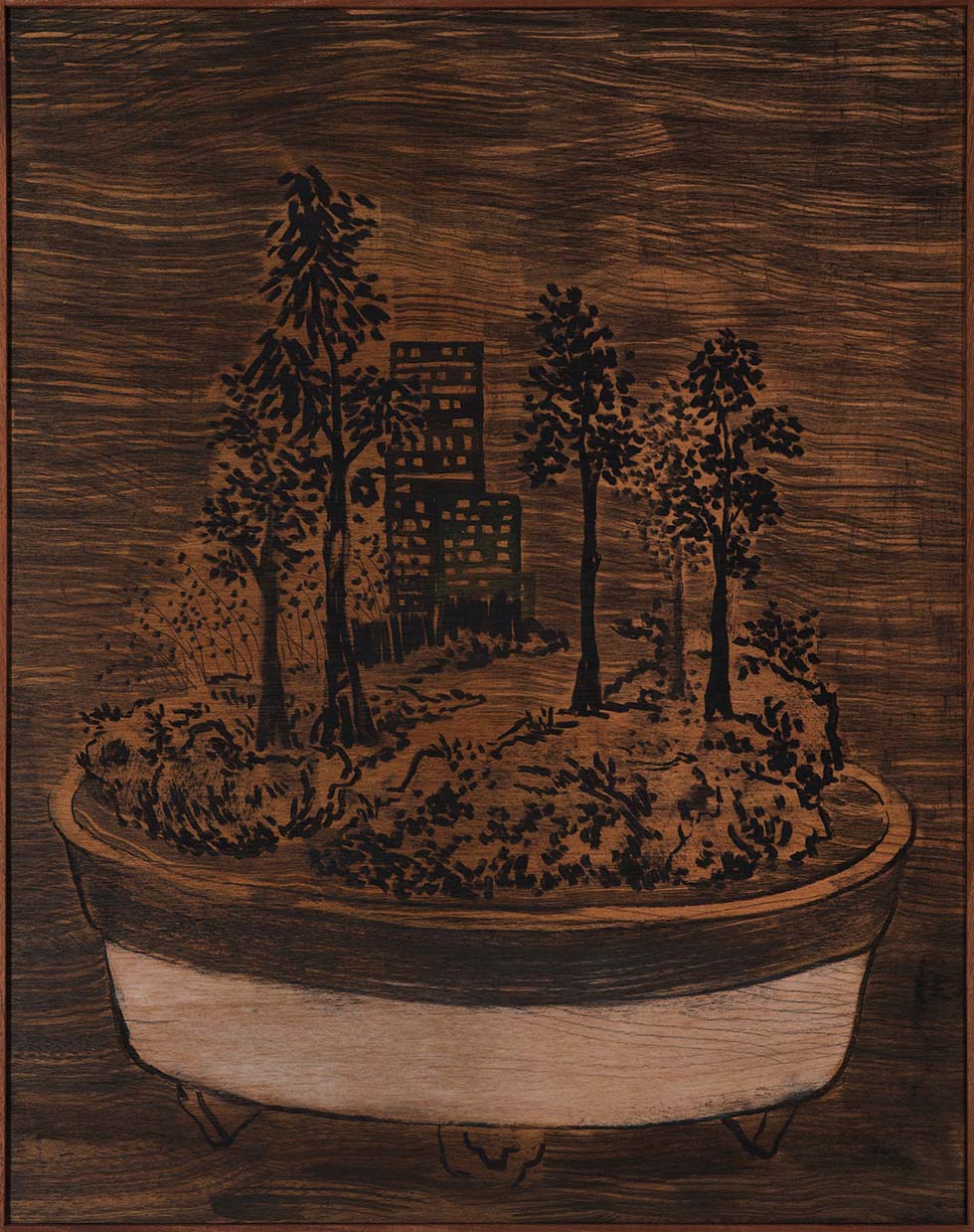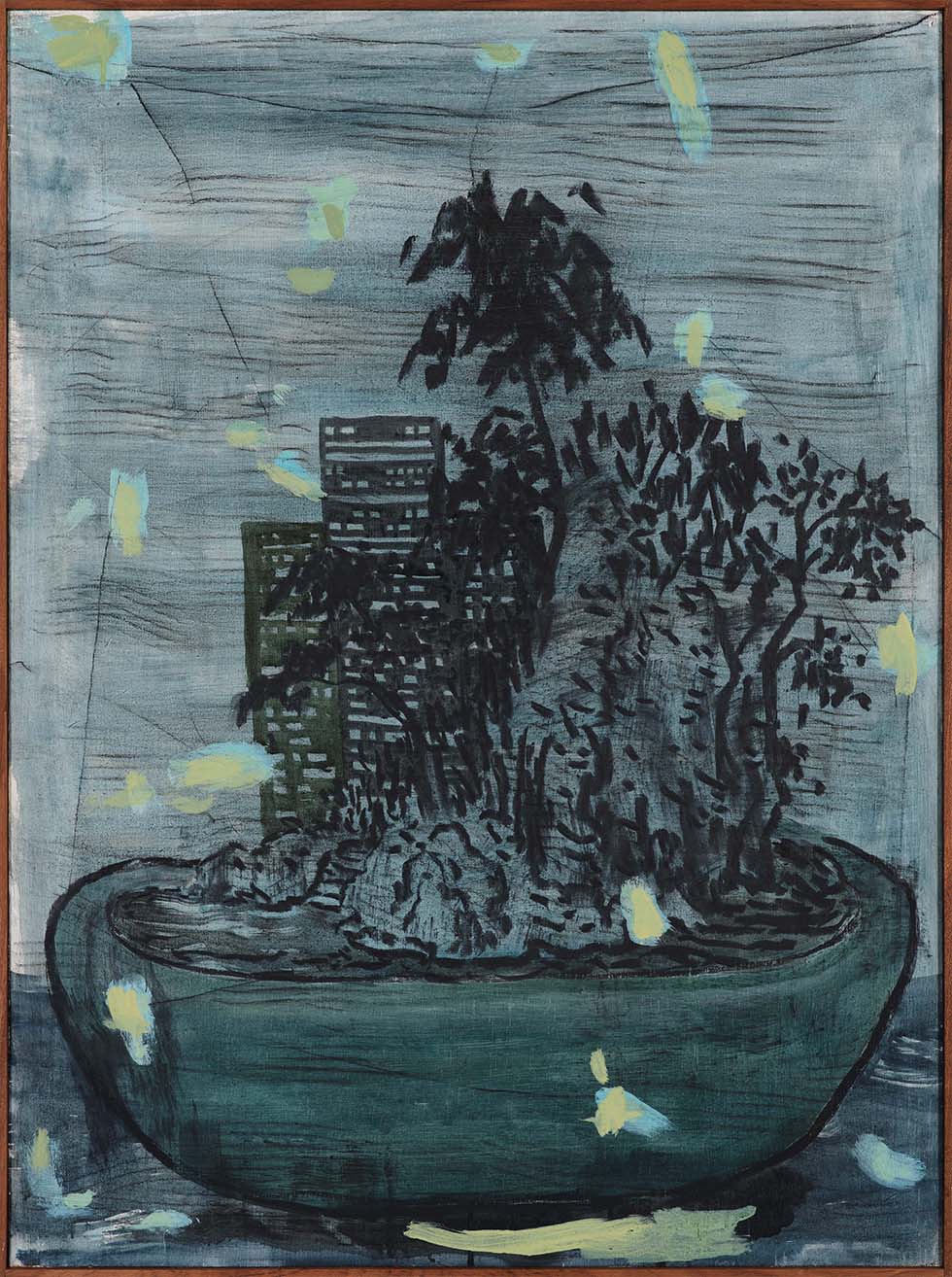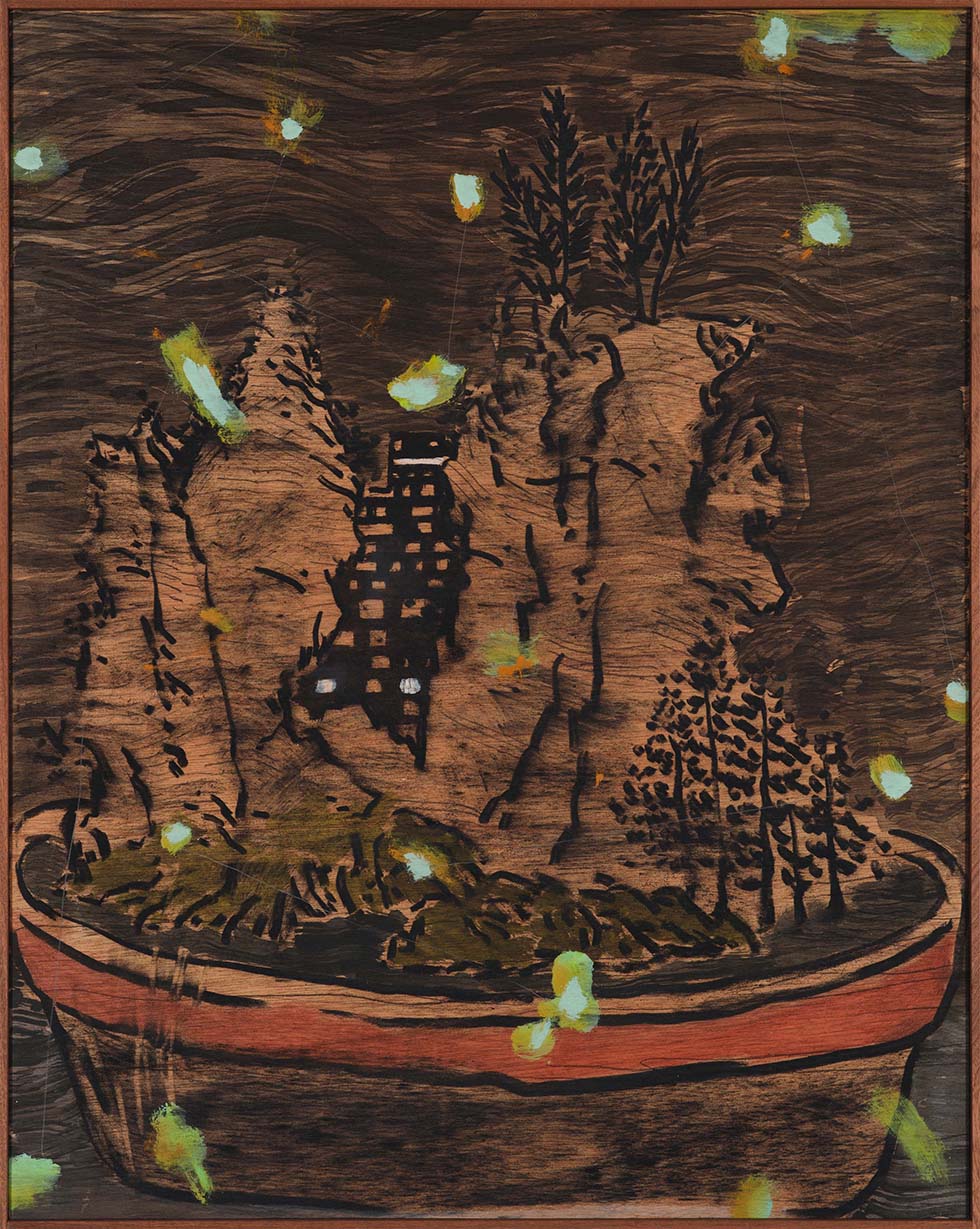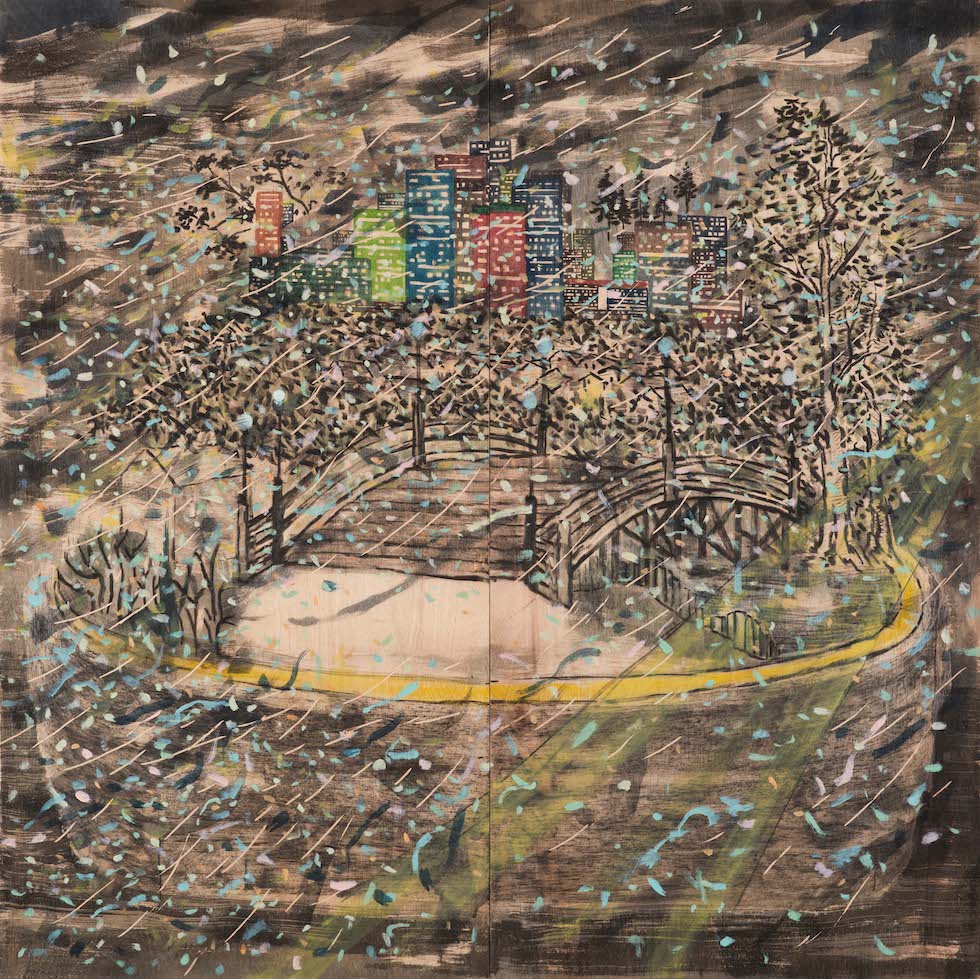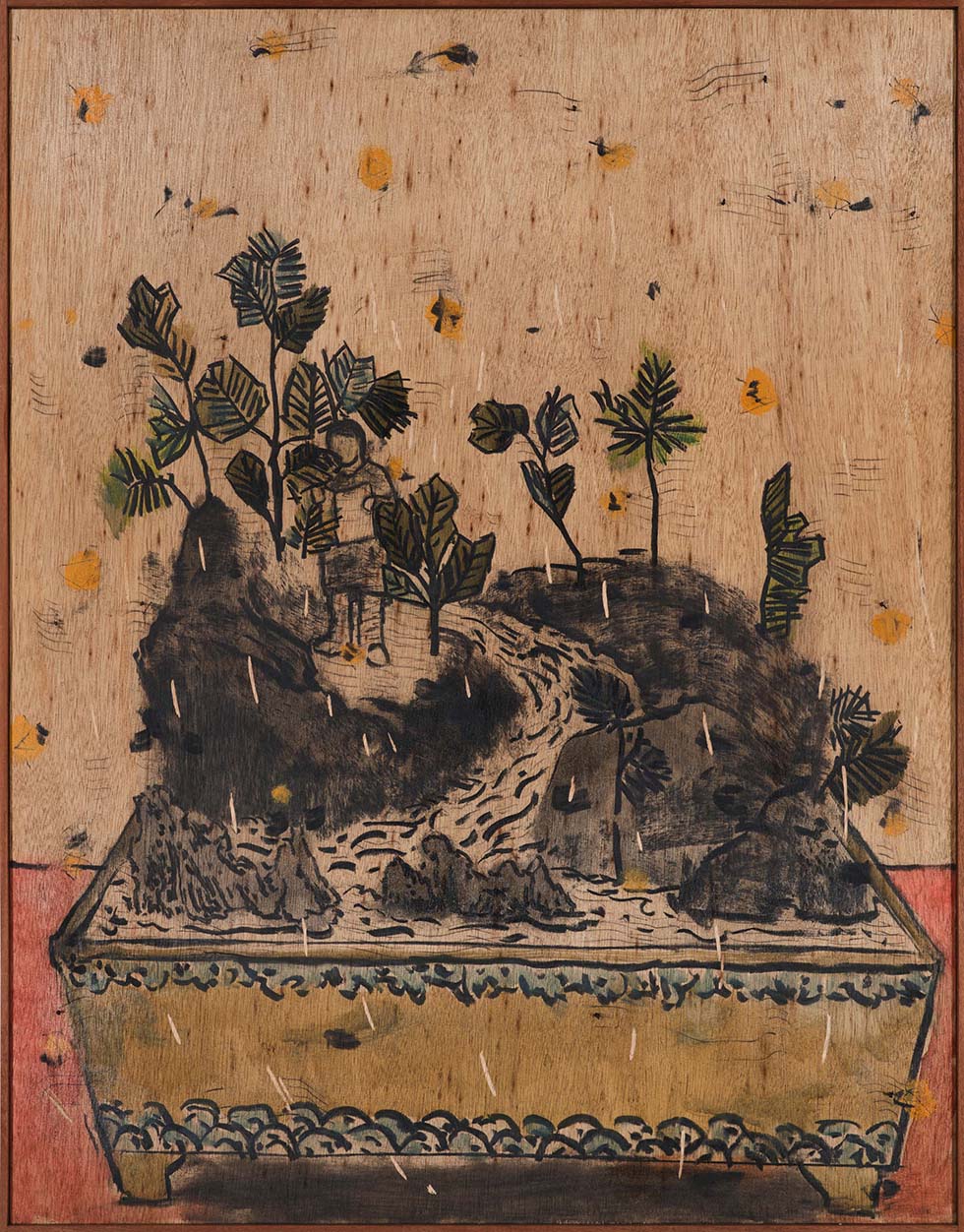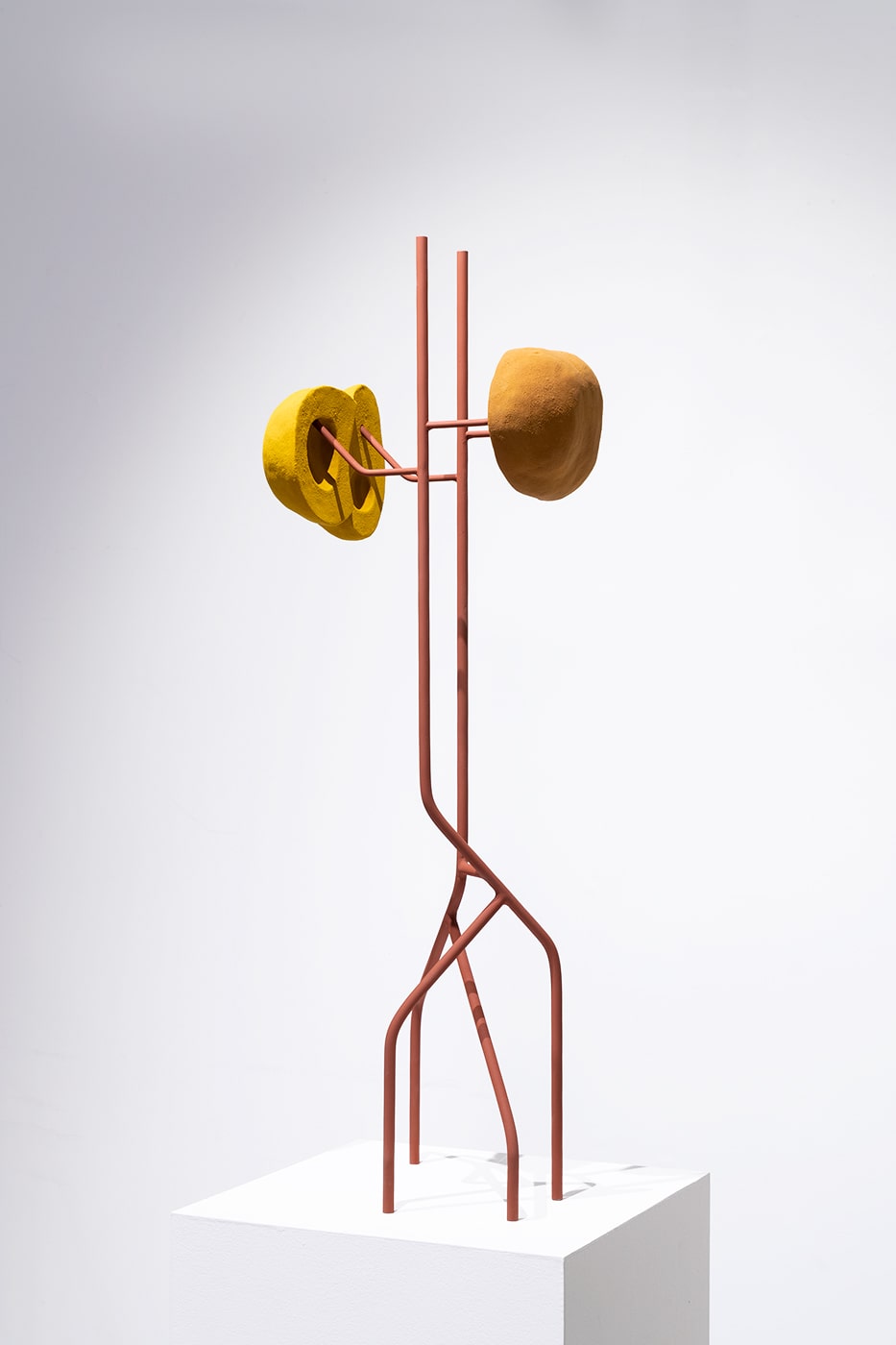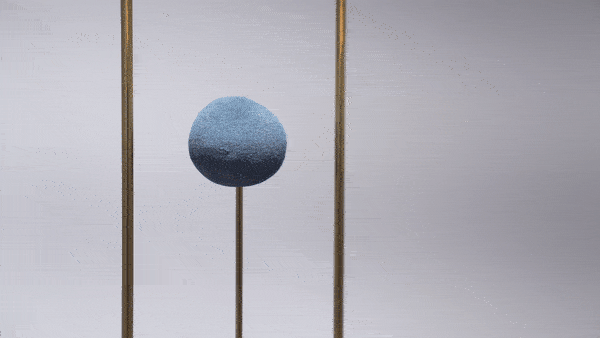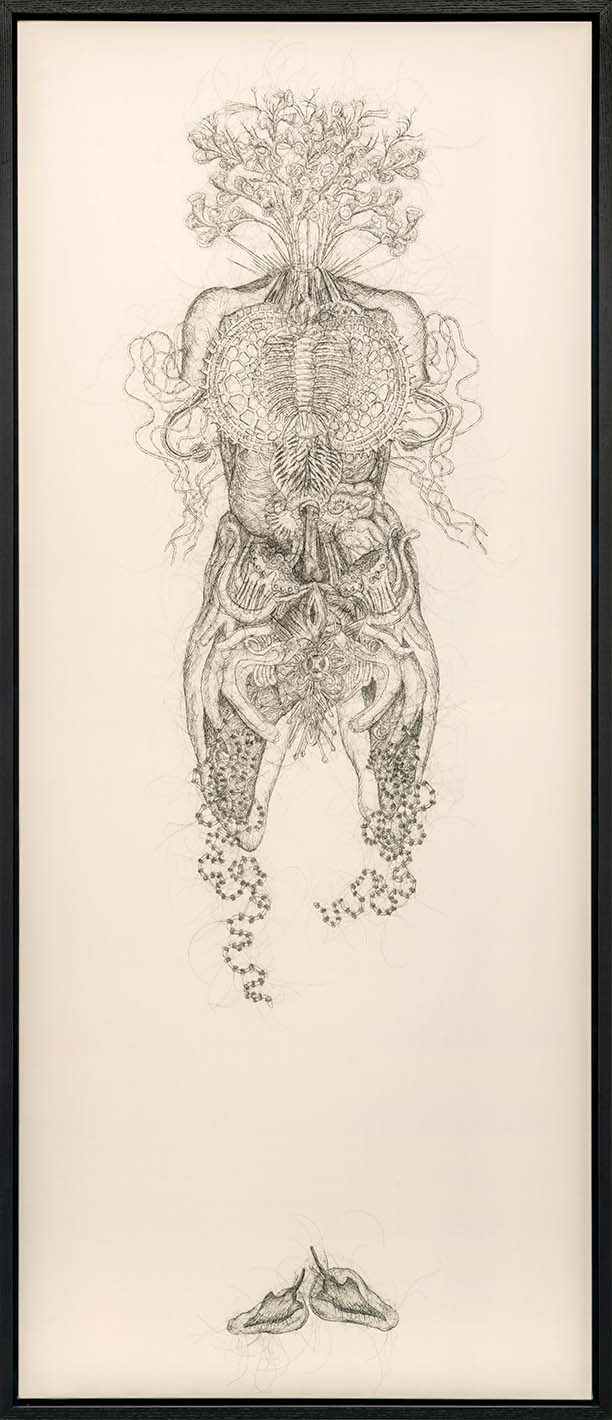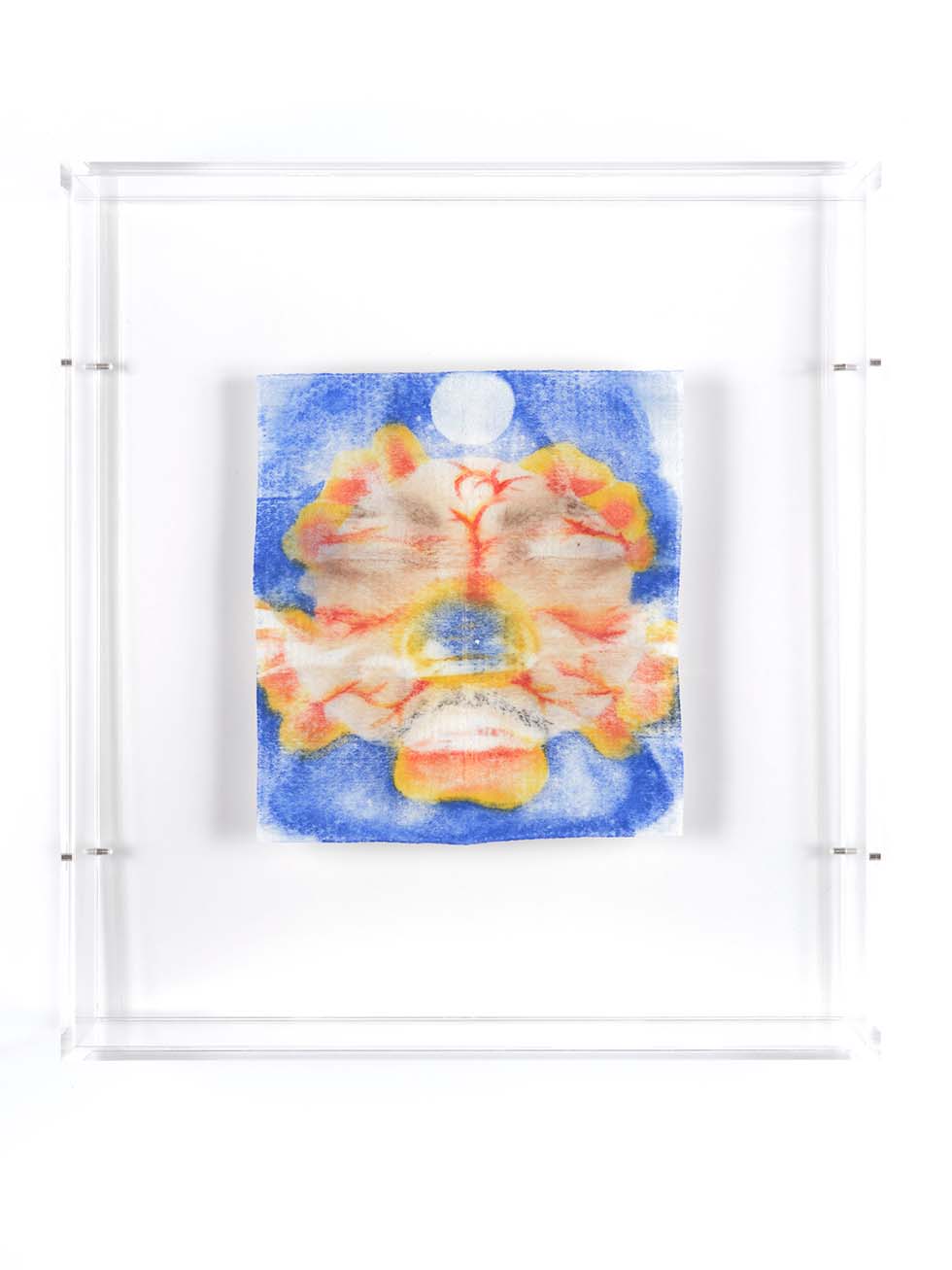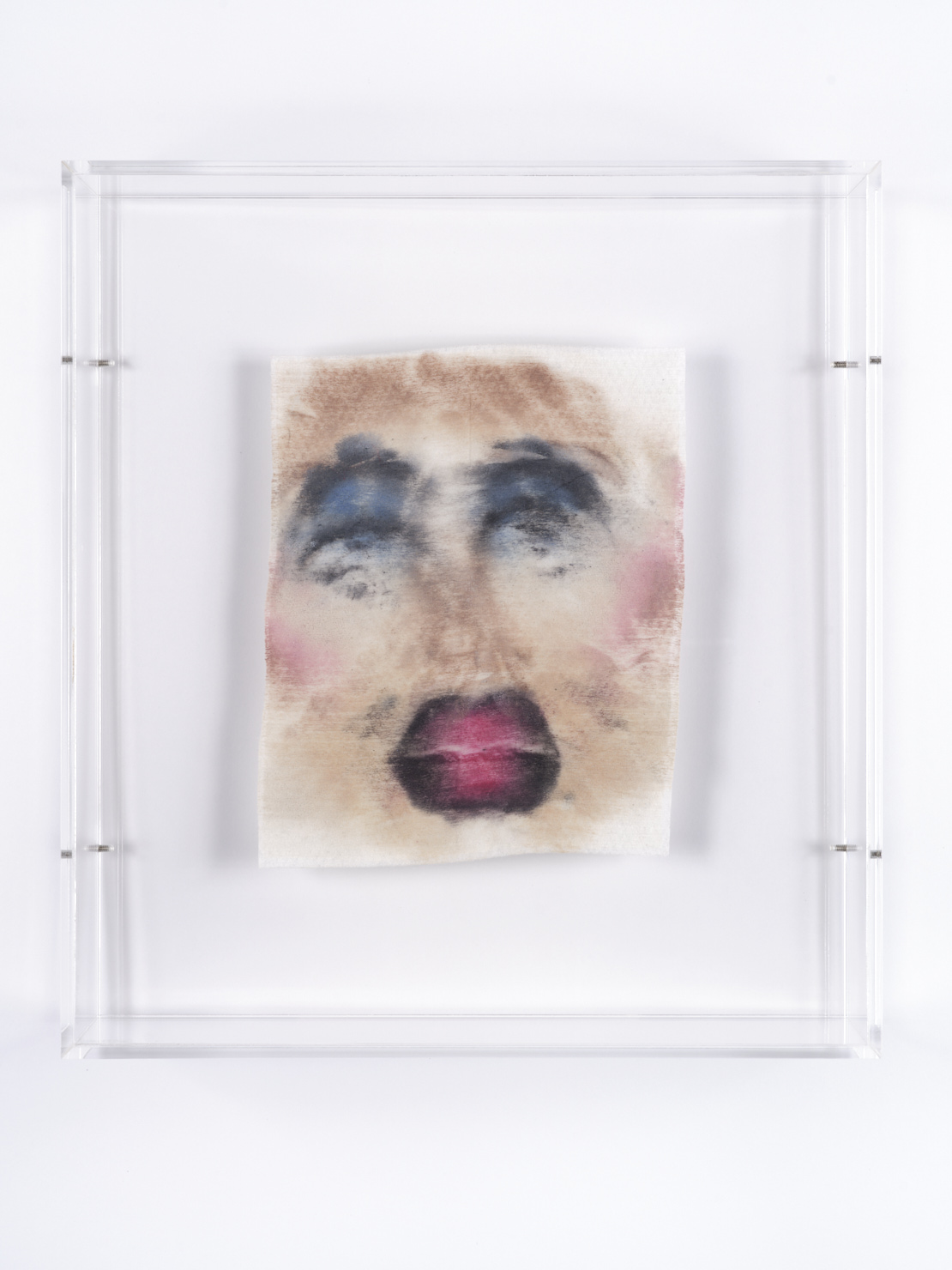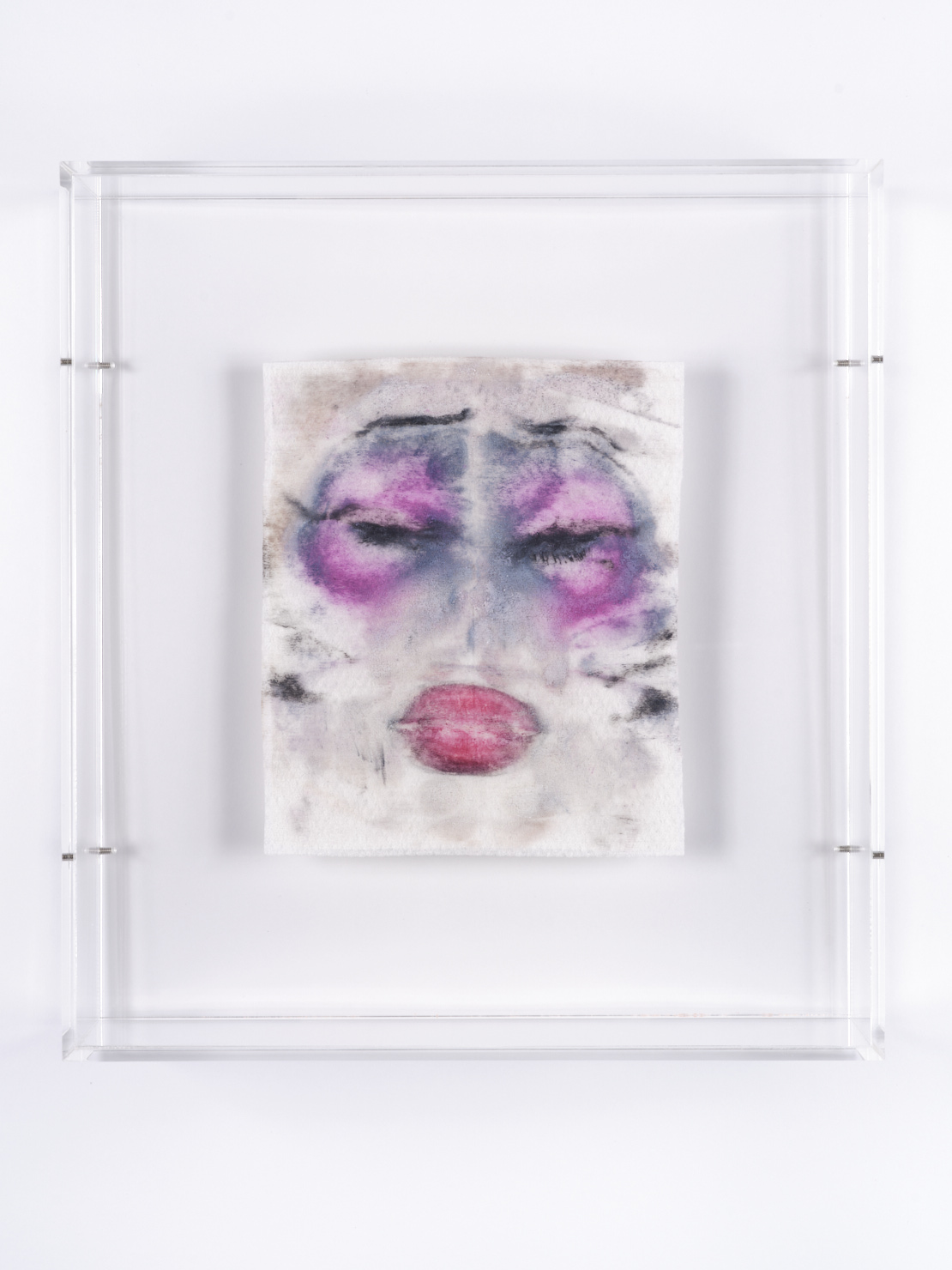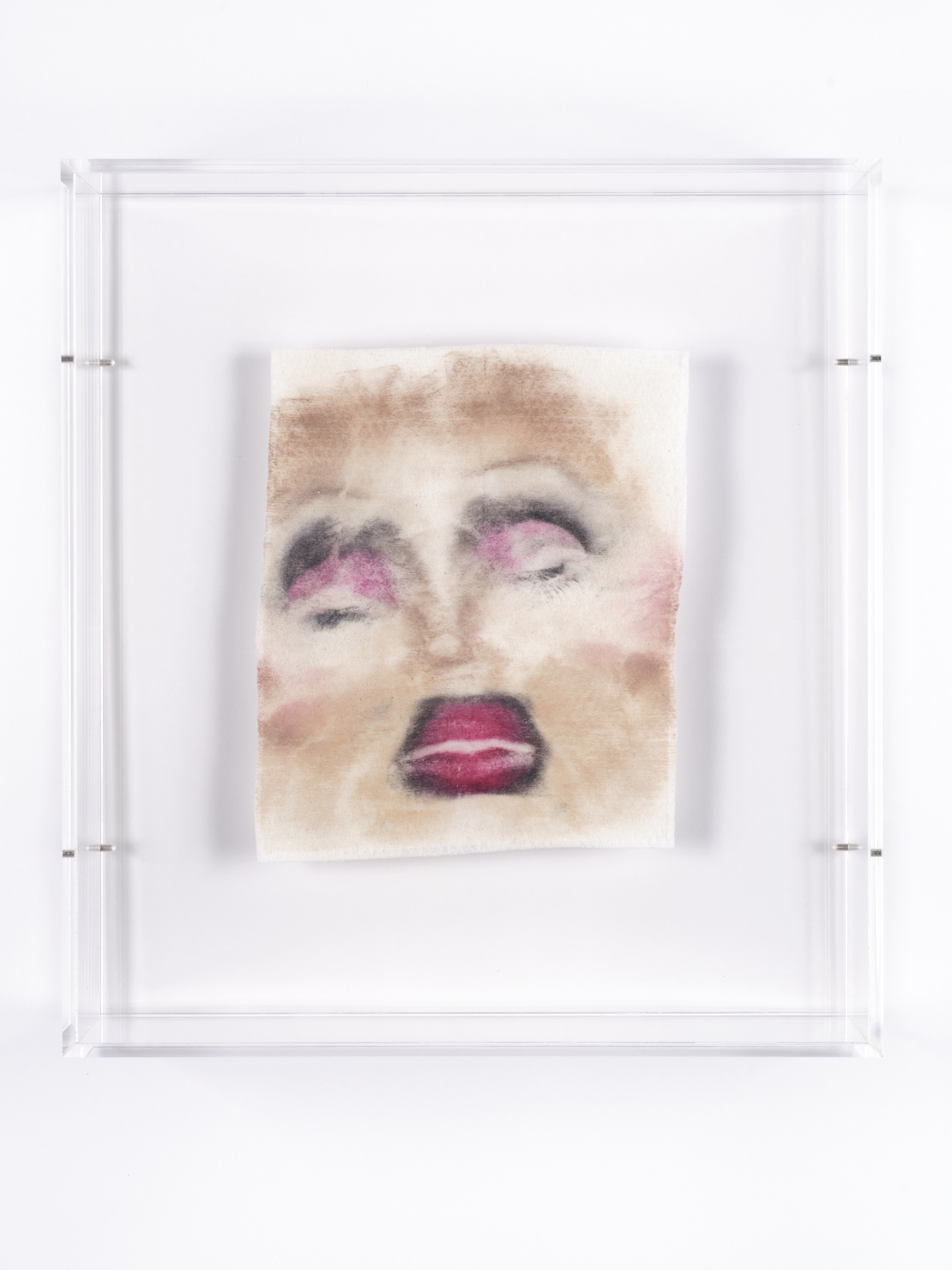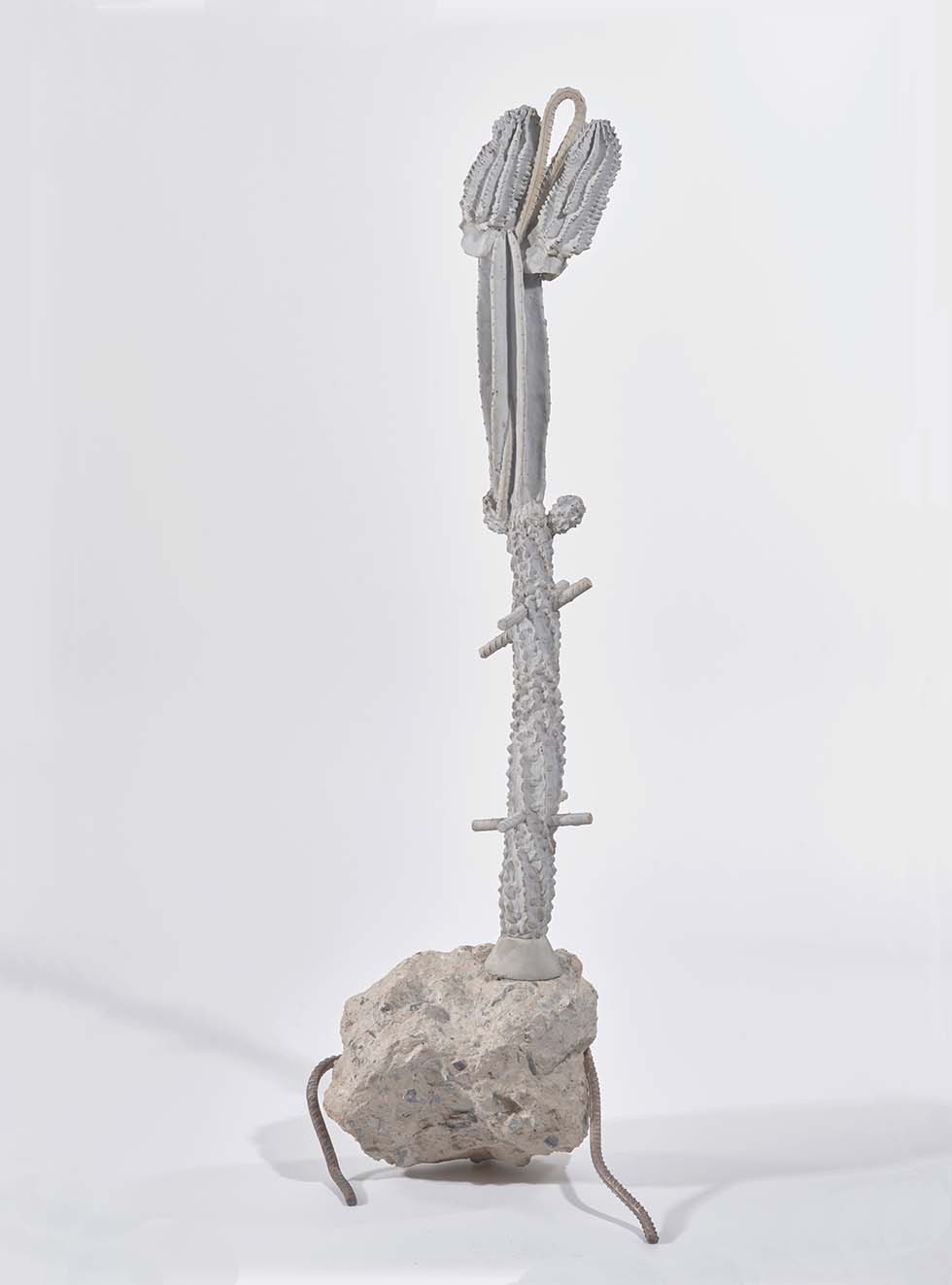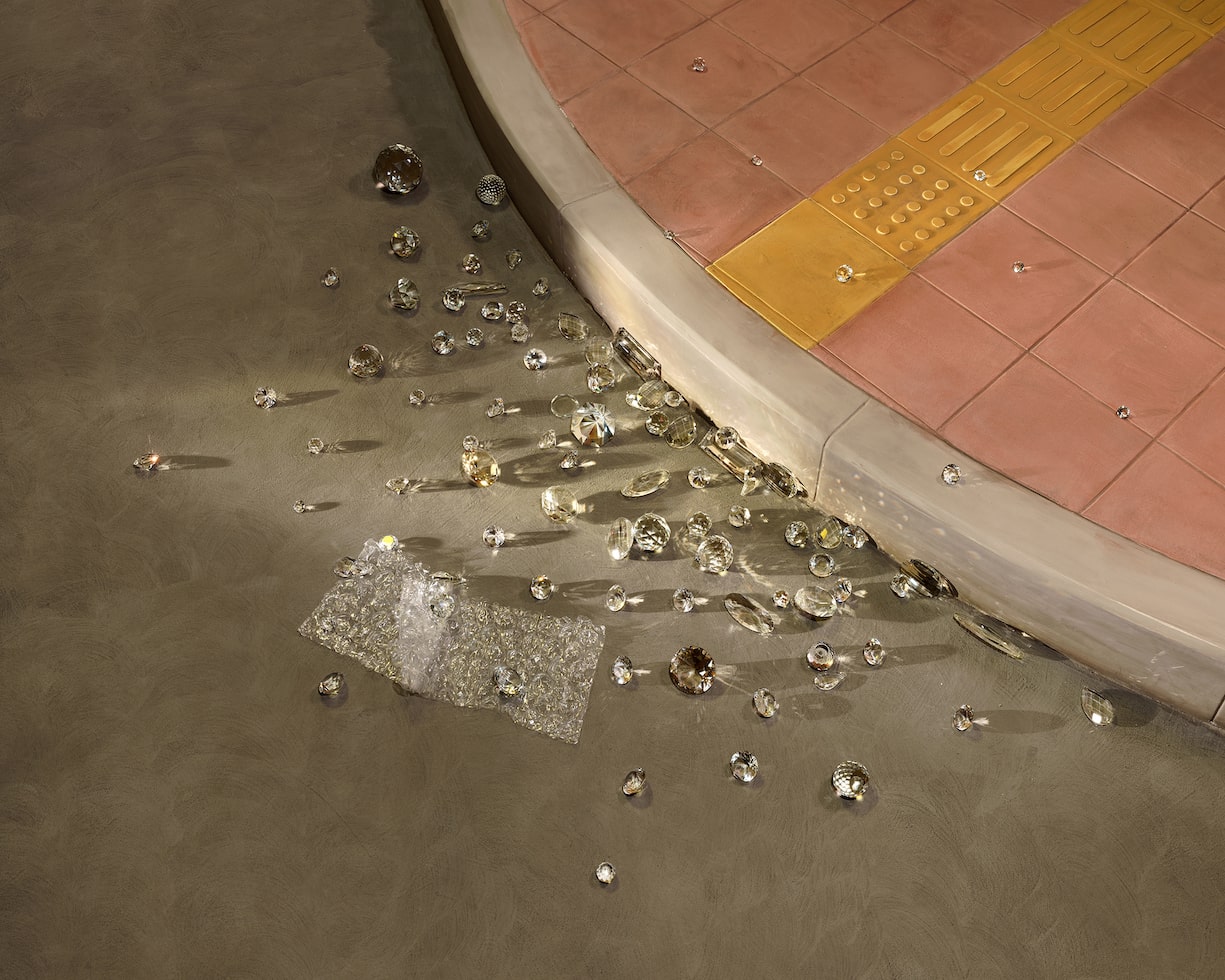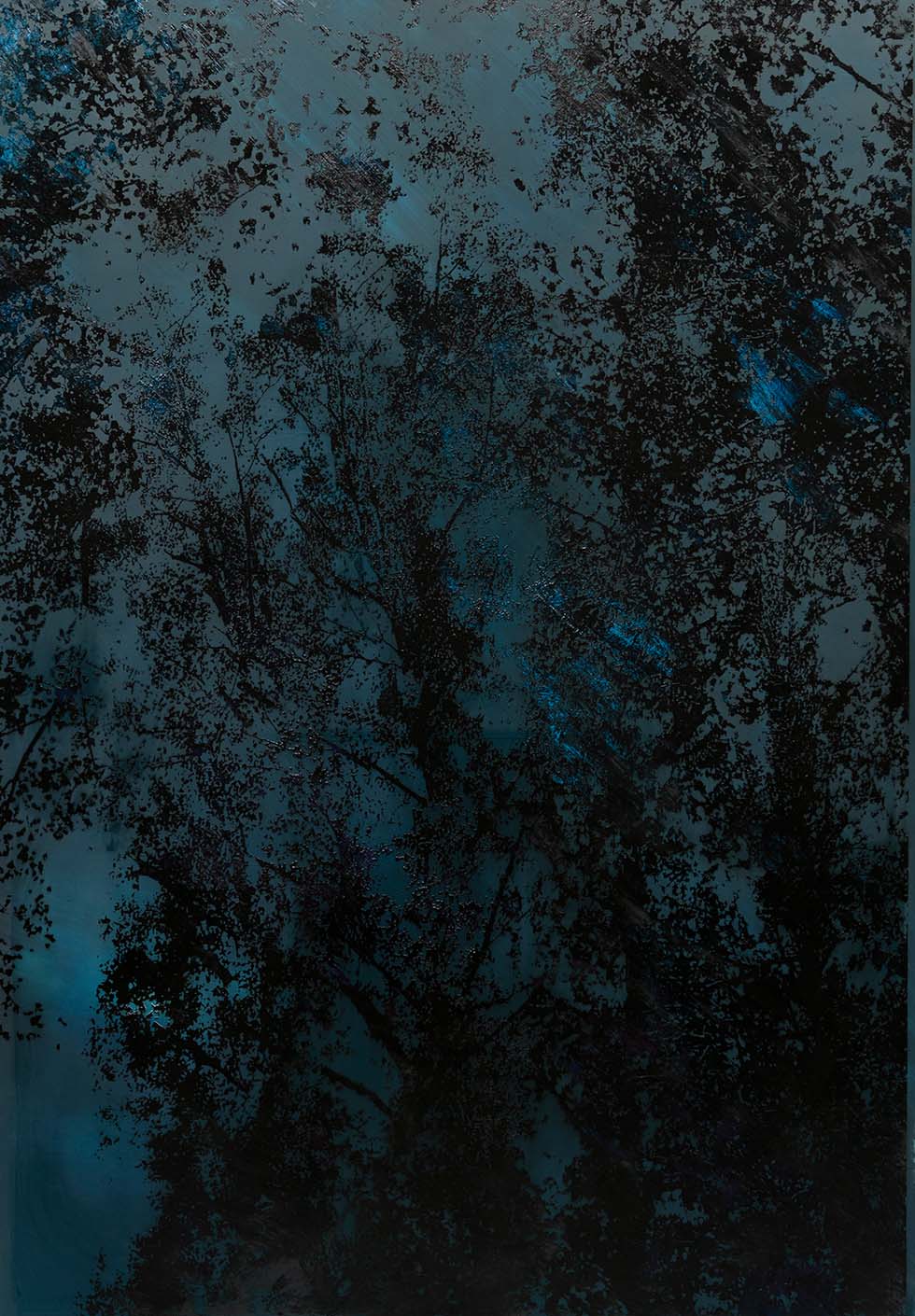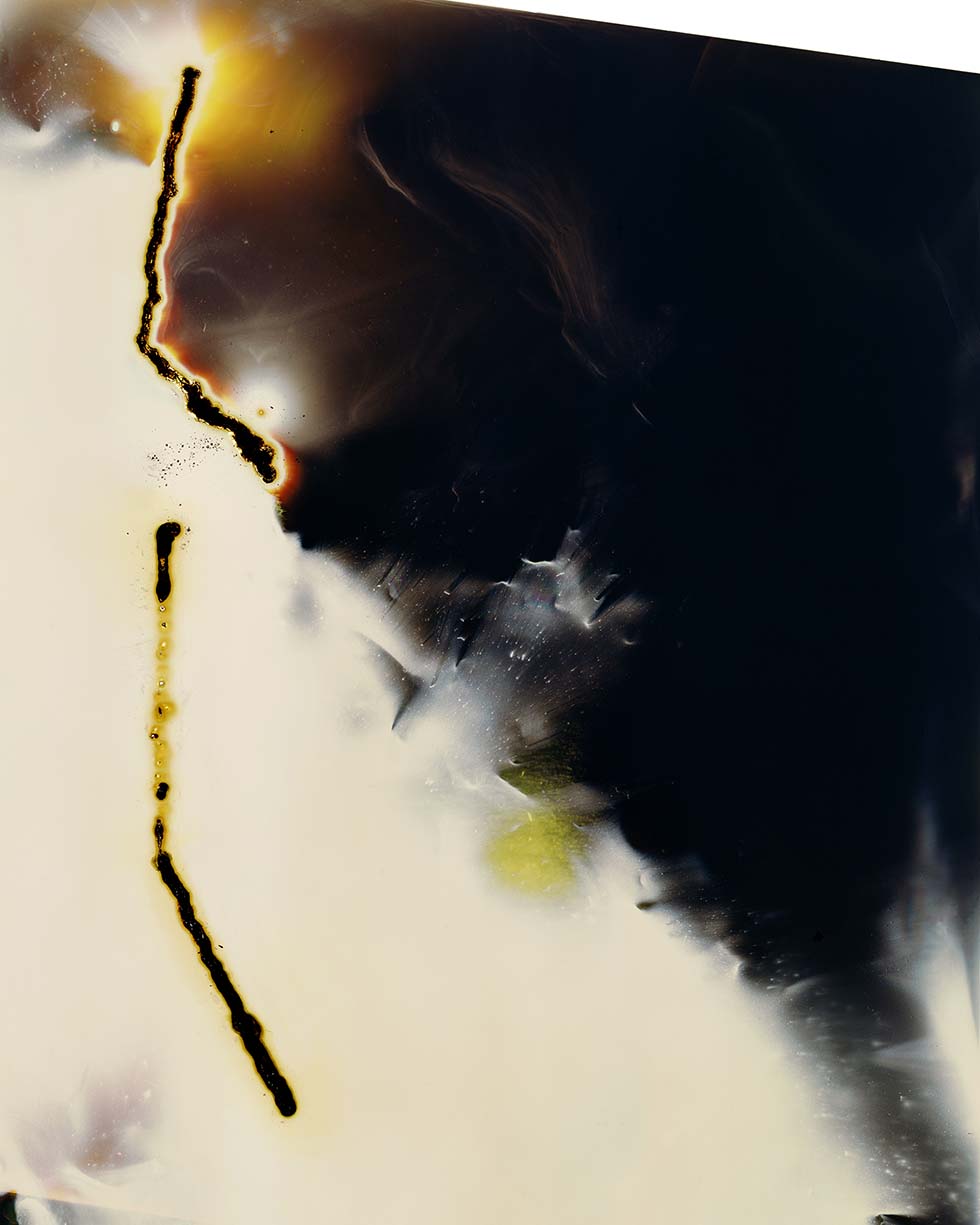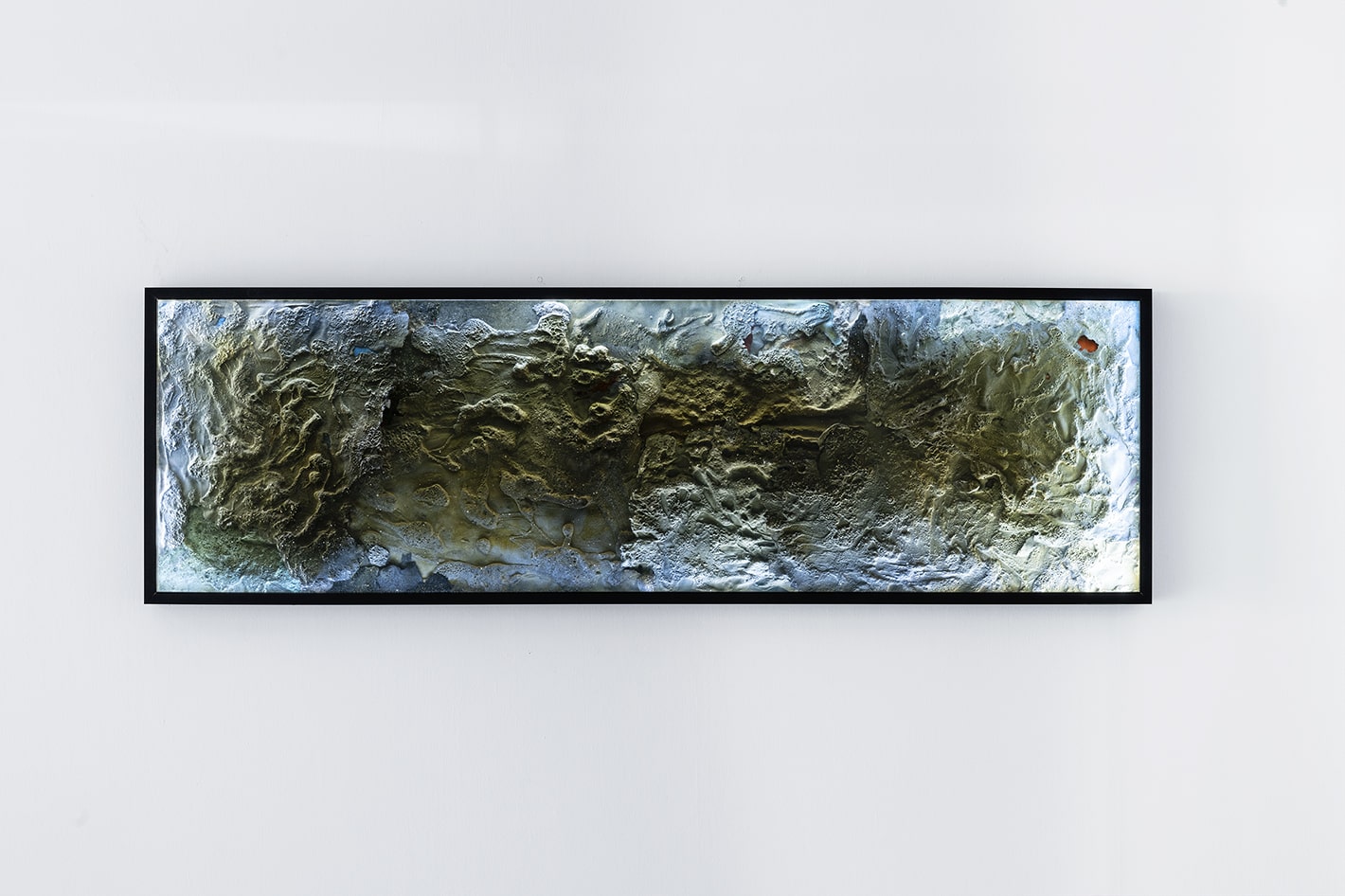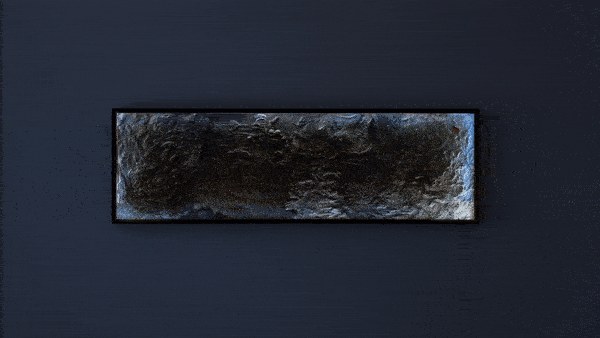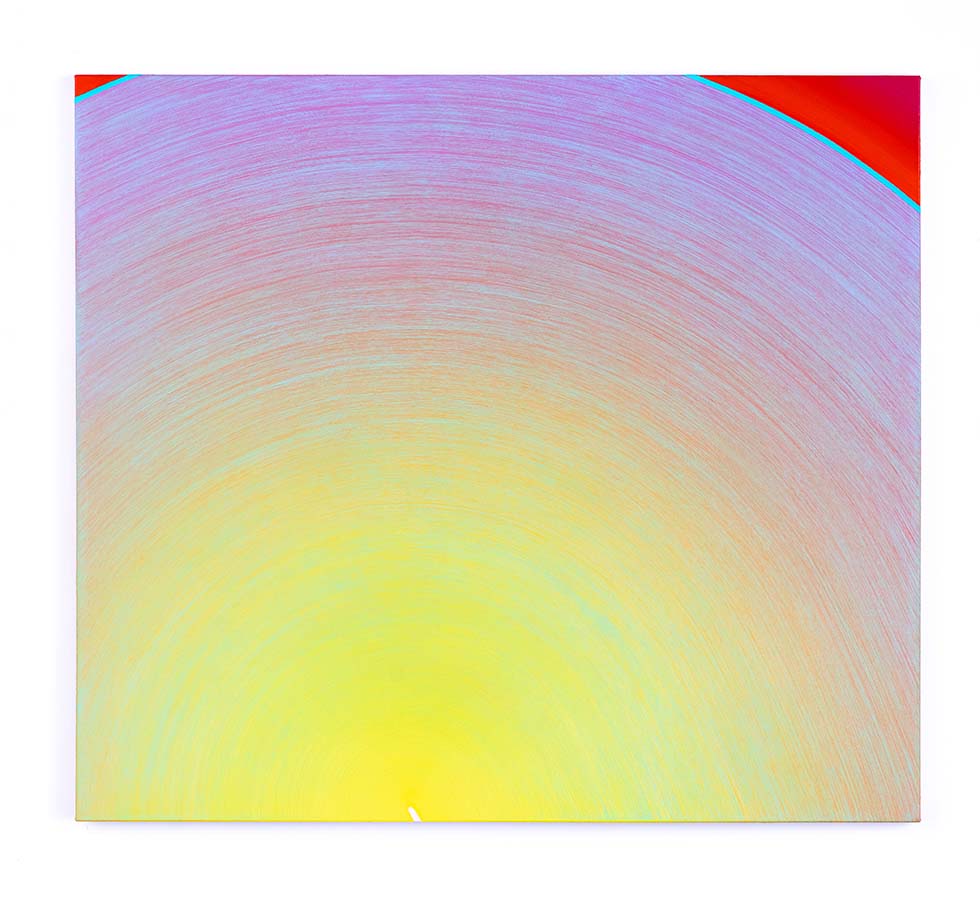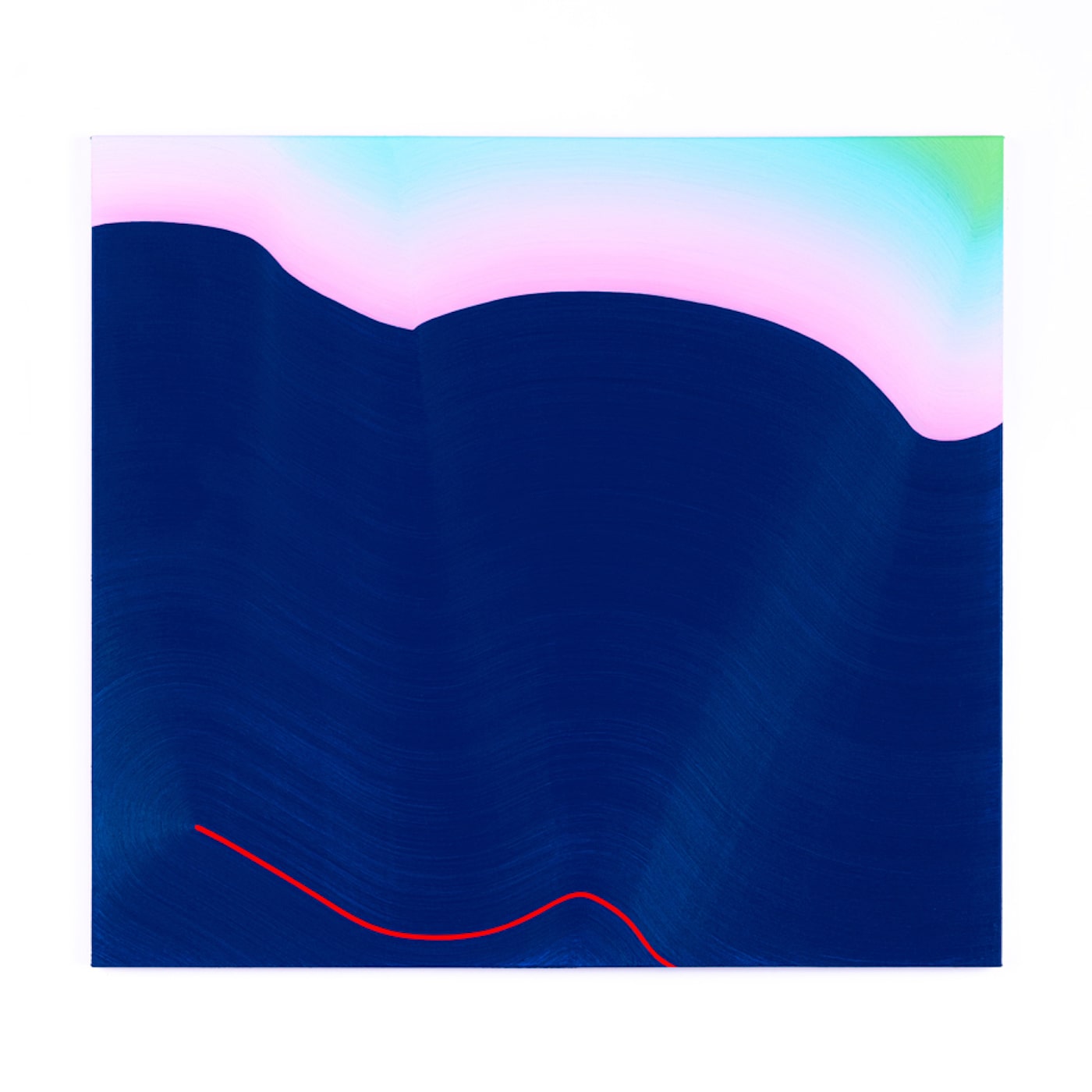Venue: Hong Kong Exhibition and Convention Centre
Booth 1C01
Blindspot Gallery is delighted to announce our participation at Art|Basel Hong Kong 2022 at the Hong Kong Convention and Exhibition Centre, presenting works by Paul Barlow, Chen Wei, Un Cheng, Jiang Pengyi, Jiang Zhi, Osamu Kobayashi, Lam Tung Pang, Andrew Luk, Sin Wai Kin, So Wing Po, Angela Su, Trevor Yeung and Zhang Ruyi.
Lam Tung Pang presents his latest Potted City series (2022), a collection of wooden panel paintings depicting mountain and cityscape condensed within a domestic potted bonsai. Reflecting on the scale of his microscopic self against the monumental world, the artist embraces the sentiments of longing and loss whilst bracing himself for the journey ahead. These allegorical landscapes serve as a token of remembrance for the artist.
Un Cheng’s paintings transport us to Iceland where the artist completed a residency in 2018. Whilst strolling the sparse landscapes of the Nordic winter, the artist found companionship and comfort in her internal dwellings. Piecing together photographic fragments with mental imagery, she selectively depicts specific subject matter, whilst plunging the rest of the pictorial landscape into a surreal blur. Simultaneously at Blindspot Gallery, Cheng presents her solo exhibition What’s there when you ain’t home?.
In Horizon Scan No.6 (2017), Andrew Luk torches pieces of a painted canvas using homemade napalm, collaging the charred pieces into an encased lightbox with gradually changing colour temperature. The illuminated piece appears to resemble a rugged and barren terrain. Interested in the material history of civilization, the work reveals and compresses facets of manmade and naturally occurring histories into a single frame.
So Wing Po’s unique sensitivity, observation and imagination towards the fabric of nature is manifested in her newest static and kinetic work Organ #3 and Organ #4 (2022). A sculptural study physically replicating a vital biological organ is forged from medicinal herbal powders sourced from nature. Reflecting on the correlations between interior and exterior macro and microorganic substances, So fabricates ecosystems that defy the natural orders of the universe.
In the hair embroidery work Juliette (2019), Angela Su reconstructs and recontextualizes the anatomy of the female body, where skin and internal organs are metamorphosized into an intricate network of mechanical hardware and alien growth. Reflecting on the history of the female body as a heavily politicized and gendered vessel, Su’s female cyborg stands in defiance against these existing constructs.
Sin Wai Kin’s A world dreaming they are you (2021) is a make-up removal wipe imprinted with the face paint of their character The Storyteller who made his first appearance in the video work Today’s Top Stories (2020). Challenging the media biases rooted in the storytelling of news accounts, The Storyteller examines the often indistinguishable binary between reality and illusion.
Zhang Ruyi’s practice deals with the crossover between organic phenomena and industrial landscapes, her sculptures often reminiscent of relics in a post-urbanist landscape. Zhang’s Matte Substance series (2019-ongoing) incorporate fragments from demolition sites, rendering the life of cacti into artificial stone. These defunct life forms become monuments imbued with natural history.
Trevor Yeung presents his newest edition of his Night Mushroom Colon series, a mixed media work that combines electrical converters and night lights, forming a cluster of unruly luminescent mushrooms thriving in fecundity, reproducing through polyamorous converters and tempting colors. Night Mushroom Colon (Twelve) (2022) sees the colony penetrate a meandering limb in the form of an extension cable out from the vicinity of its unassmuming corner.
Jiang Zhi’s latest edition in his oil painted series, The world is yours, as well as ours (2013-ongoing) sees the artist intentionally glitch images of landscapes through digital processes and silkscreen printing techniques. The artist pushes paint through the porous fabric of the polyester canvas, blurring the visual field from both sides of the picture plane. The oil painting ultimately materializes as a union of photographic and print elements.
In The Glowing Dust Grains (2021), Chen Wei stages a scene of a pedestrian, reimagining the disregarded dust grains on the curb as a scatter of glistening gems and jewels. Against the backdrop of industrial and gentrified China, Chen Wei frequently conveys the mixed sentiments on the equally new and neglected city. Imbued with an illusory air, the image straddles the ambiguous boundaries between the familiar and the imagined.
Jiang Pengyi manipulates photographic film through exothermic processes in his Sun! Sun! series (2018-ongoing), creating abstracted images by employing the rays of the sun. Using a magnifying glass to intensify sunlight, the artist kindles a flame, burning scars and fissures onto a cardboard contraption that covers light sensitive film. Like the afterimages when we stare at the sun, the photographic film uncovers an ensemble of spectral streaks.
Contrary to traditional painters who layer paint onto a canvas, Paul Barlow uses water as a solvent to strip away residues of colour pigments with a sequence of repetitive motions. Like currents forming sand ripples and seawater eroding coastlines, water configures the patterns and silhouettes on Barlow’s canvas, forming micro- geological strata of vegetative tendrils, oceanic trances, and psychedelic hallucinations.
Osamu Kobayashi creates oil paintings that form a balance of textured colour fields, squiggly lines and uniform brushstrokes. With a self-made contraption that links a bevy of paint brushes, the artist applies paint onto the canvas in a grand continuous sweep. The picture plane is a field of action and counteraction, a dualistic plane between flatness and illusion of space, softness and hard edge, stillness and dynamism.


